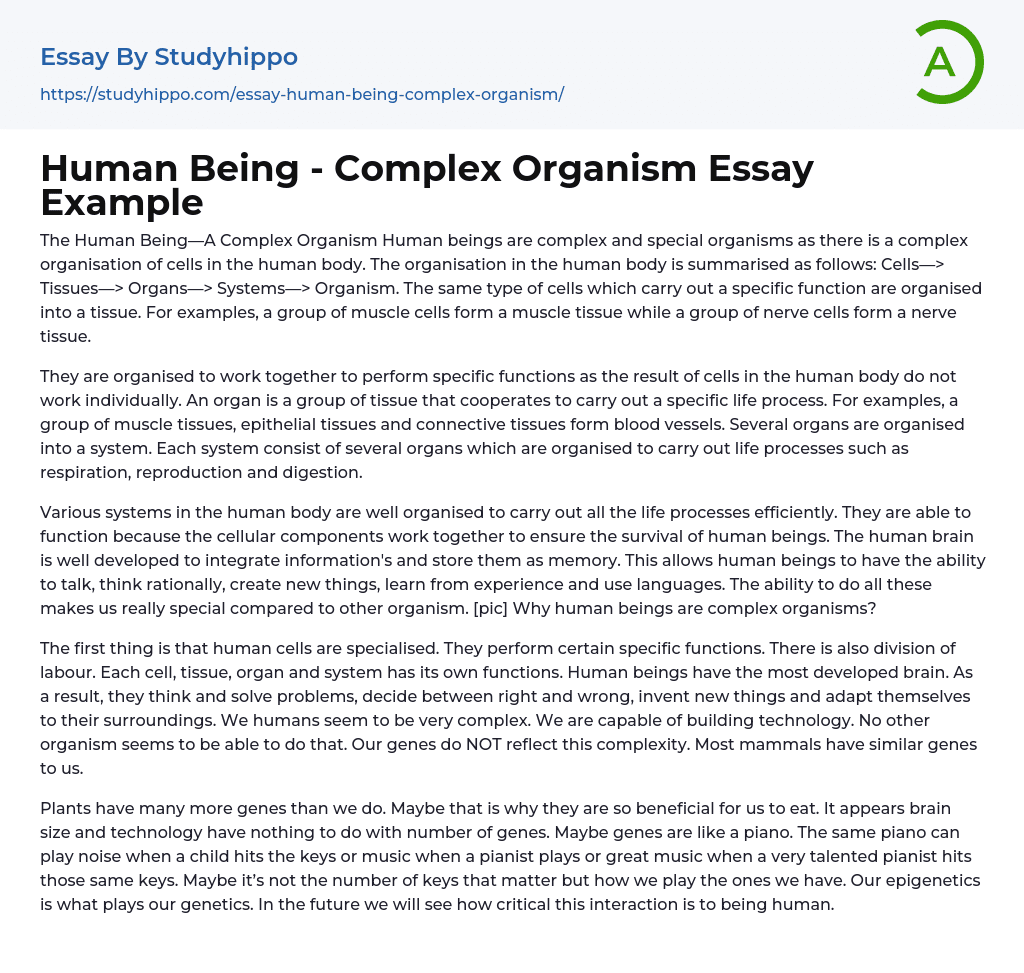The intricate nature of the Human Being, a distinct and convoluted being, is credited to its advanced cellular structure which constitutes the human body. The structure can be concisely outlined as: Cells -> Tissues -> Organs -> Systems -> Organism. Comparable cell types unite to carry out precise functions, consequently constructing tissues. For example, muscle cells combine to create muscle tissue, similarly like nerve cells assemble to form nerve tissue.
Human body cells operate not in isolation, but collectively to execute distinct tasks. This coordination takes place at the organ level, which are clusters of tissues that collaboratively perform certain biological functions. To illustrate, blood vessels are formed when muscle, epithelial, and connective tissues join forces. Moreover, multiple organs come together into systems where they function synergistically to accomplish vital life processes like breathing, procreation, and dige
...stion.
The human body possesses a highly structured system that effectively executes diverse biological functions. The symbiotic collaboration of cellular parts ensures the existence of humans. Our brain is exceptionally advanced, facilitating the assimilation of knowledge and memory creation. This distinctive capacity allows us to communicate, reason intelligently, create new ideas, learn from previous experiences and utilize different languages. These skills set us apart from other life forms and truly elevate our uniqueness.[pic] What factors contribute to the complexity of human beings?
Every human cell is designed to carry out distinct roles, with each cell, tissue, organ and system possessing their own unique functions. In addition, humans have an unmatched brain capacity that provides abilities like problem-solving, decision-making, innovation and adjusting to our surroundings. This intricacy enables us to create technology - a feat
not achieved by any other living beings. Nonetheless, it should be emphasized that despite our complex traits, our genetic structure doesn't show this complexity as we share a similar genetic blueprint with the majority of mammals.
The prominent genetic structure of plants, in relation to humans, could explain their beneficial effects on our health when consumed. Intriguingly, there doesn't appear to be any correlation between the size of the brain or technological advancement and the gene count. This metaphor implies that genes can be likened to a piano—with potential for creating either harmonious music or jarring noise depending on how they're played. The quantity of keys might not be as important as their application. Our epigenetics, controllers of gene expression, significantly influence our genetics. Moving forward, we aspire to enhance our comprehension of the crucial link between epigenetics and what truly makes us human.
- Action Potential essays
- Blood essays
- Body essays
- Brain essays
- Childbirth essays
- Eye essays
- Glucose essays
- Heart essays
- Human Physiology essays
- Immune System essays
- Kidney essays
- Muscle essays
- Nervous System essays
- Neuron essays
- Poison essays
- Puberty essays
- Sense essays
- Skeleton essays
- Skin essays
- Bacteria essays
- Biotechnology essays
- Breeding essays
- Cell essays
- Cell Membrane essays
- Cystic Fibrosis essays
- Enzyme essays
- Human essays
- Microbiology essays
- Natural Selection essays
- Photosynthesis essays
- Plant essays
- Protein essays
- Stem Cell essays
- Viruses essays




